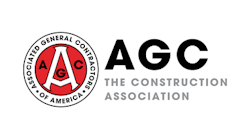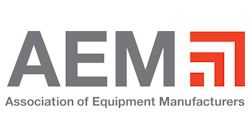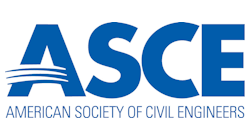ITA Tunnelling Awards 2015: In China, Turkey, USA—3 Shortlisted Entries the Category “Major Tunnelling Projects”
Next November 19th, the International Tunnelling and Underground Space Association will organise the edition 2015 of the “ITA Tunnelling Awards” in a unique underground location: the Hagerbach underground test facility in Switzerland. In the perspective of the Award Ceremony organized on the D Day, 32 projects have recently been preselected. Three of them have notably been nominated in the category “Major Tunnelling Project of the Year”, related to large-scale tunnelling and underground space projects requiring an investment of over 500 million euros. And the nominees are… the Eurasia Tunnel, the New York City’s Second Avenue Subway, and the Futian Station of the Guangzhou-Shenzhen-Hong Kong High-Speed Railway. Focus on these three ambitious projects.
The Eurasian Tunnel, the 1st highway tunnel joining Asia and Europe by using a mechanized tunnel boring machine (TBM)
The 14.6 km Eurasian Tunnel, on the Kazlıçeşme-Göztepe route, will connect by 2016, the Asian and European lands through a highway tunnel going under the seabed of Istanbul Bosphorus Strait. Its existence will considerably reduce times of travels between the Asian and the European sides, from 100 minutes to 15 minutes. With the thinning of the traffic and the rearrangement of access roads permitted by the tunnel, this flagship project is strategic for the city of Istanbul, which prepares itself to host major international organizations.
Technically speaking, it will be the first undersea tunnel linking Asia and Europe constructed thanks to a mechanized tunnel boring machine (TBM). The latter is endowed with an outer diameter of 13.7 meters, in order to excavate a 3.34 kilometre subsea tunnel under the Bosphorus. Owing to the scope of the tunnel and demanding ground conditions (full face rock sections, a long central stretch of difficult mixed face and soft ground stratum along the tunnel line, and an 11-bar anticipated face pressure), the works require a highly specialized TBM. Specifically designed seismic joints that can resist to a 12 bar pressure, were also installed at the transition areas, between rock and soft soils. Ultra-high performance concretes with compressive strength of 80 MPa were produced; they can actually resist under extreme subsea conditions for up to 120 years. At last, the water/cement ratio was reduced to 0.34 in order to conceive impermeable concrete. Such strategy permits to avoid the use of corrosion inhibitors in the project, which generate a substantial economy.
New York City’s Second Avenue Subway Project
Initiated 8 years ago and operational by 2016, the New York City Second Avenue Subway is the largest US transit project so far. It consisted in constructing a new subway line to expand the metropolitan subway network, for the lines 4, 5 and 6 that are currently the only ones serving the Upper East Side. With an expected ridership of over 200,000 weekday riders, it will contain overcrowding and delays on the existing parallel line, improving travel within the City centre as well as in the suburban commuters, and upgrading access to mass transit for residents of the East Side of Manhattan.
This underground construction is one of the world’s most complex and challenging projects, including large excavation spans, low rock cover (only 1/3 of a standard cavern span), variable geotechnical conditions, large and complex intersections, and underground obstructions. Owing to its dense urban environment (one of the highest concentration of utilities, skyscrapers, and traffic in the world), the project is deemed a reference in North America, notably for its innovative engineering solutions. Indeed, several challenges in the construction structure were addressed thanks to unprecedented innovations. Large and shallow station caverns including optimized excavation sequencing and support system, drilling and blasting in close proximity to multiple tall building foundations, vibration and dust control approaches, underpinning an occupied 30-storey luxury high-rise building, or building two highly sophisticated muck houses for each station’s excavation to minimize environmental impacts. A unique example of inter-disciplinary coordination (tunnelling and underground experts, architects, electricians, mechanical engineers…), the project recently received the Green Building Design Award from the US Environmental Protection Agency.
The Futian Station of Guangzhou-Shenzhen-Hong Kong High-Speed Railway and the urban high-speed train
The Guangzhou-Shenzhen-Hong Kong High-Speed Railway is a part of the Beijing-Hong Kong High Speed Railway, planned to connect mainland China and Hong Kong. It aims at developing transit from Guangzhou South Station to Kowloon West, Hong Kong, notably going through the Shenzhen North Station and the Futian Station, which was to be constructed. This 11.4 km long project was also structured around the Yitian Road Tunnel, located between the Shenzhen North Railway Station and the Futian Station. Amounting 933 million dollars, the achievement of the project has considerably reduced the travel time from Guangzhou to Hong Kong. The works began in 2008 and came to an end on June 2015.
Essentially visited by high-end business passengers, the Futian Station is now the first underground railway station in China and the largest one in Asia. More than 1,000 meter long, 32 meter deep and almost 80 meter wide, it is designed to receive the fastest train in the world (200 km/h driving speed).
A three-layer underground station, it is structured around 8 lines and 4 platforms, and integrates junctions with urban rail networks, buses, and taxi transport systems. The station is located in the centre of the district of Futian, in Shenzhen, neighbouring skyscrapers and heavy traffic roads. During the 7 year works, engineers were confronted to dense underground pipelines and complex geological and hydrogeological conditions, from massive engineering scale and earthwork to the excavation of foundation pits reaching 1,830,000m3. The Station integrates the open-cut bottom-up and the cover-and-cut top-down methods, in order to reduce the distortion of foundation pits and soil mass and to protect the safety of Fukuda Station and its surrounding buildings. Such technics have set a precedent regarding the structure construction of a large underground station at the urban centre.
In addition to the 7 categories of projects, the ITA Awards 2015 have created 4 other categories: the Young Tunnellers of the Year, whose names were also disclosed last month, as well as the Contractors of the Year and the Engineering of the Year. An Award will also be given for Lifetime achievement. In total, ITA has shortlisted 42 entries in the framework of 11 prize categories, described in the following page.









